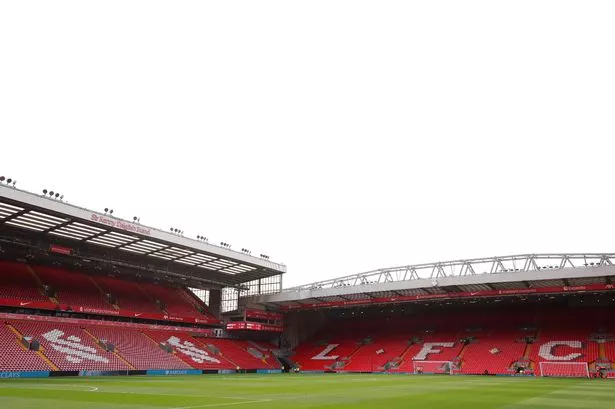
High Street shops, pubs and restaurants face £1bn tax bill from April
Shops, restaurants and pubs across England are facing an extra £1 billion in taxes when a discount is cut next month, adding to a “tsunami” of rising costs hurtling toward the sector, according to new analysis. Businesses in London will be hit hardest by changes, tax and software firm Ryan found. Firms in the retail, leisure and hospitality sector are facing increased costs in April when a discount on business rates will be reduced from 75% to 40%. The changes were announced in last year’s autumn Budget, with the Government committing to keeping the discount scheme for the next financial year but cutting the level of relief. Each business will still have a maximum discount of £110,000. Ryan’s analysis found that the reduced discount will raise an extra £1.03 billion from firms across England over the 2025-2026 tax year. Nearly a third of the extra revenue will come from businesses in London, who collectively are facing an additional £309.7 million in business rates. This is followed by an extra £157.9 million from businesses in the South East who are facing a bigger bill, and £110.5 million from firms in the North West. Alex Probyn, a property tax expert at Ryan, told the PA news agency that it “comes on top of a tsunami of other rising costs, making it a complex and challenging environment” for businesses to operate in. From April, national insurance contributions will also rise for some businesses, while they will also have to pay employees a higher national living wage. The Government has said extra revenues raised from higher taxes on businesses will help fill a gap in the UK’s public finances and be plugged into things like infrastructure and the public sector. It pledged in the Budget to introduce permanently lower business rates for smaller retail, hospitality and leisure firms from 2026. The Government has also said that some 865,000 employers will not pay any national insurance in the year ahead because of the employment allowance rising from £5,000 to £10,500. But Mr Probyn said the changes will “disproportionately affect small and independent businesses across sectors already struggling”.

Historic Preston Guild festival looks set to continue despite council abolition
Efforts are underway to ensure the historic Preston Guild festival continues despite the dissolution of the council that organises it. The once-every-20-year city celebration, which has a history spanning over 800 years, is next scheduled for 2032 – four years after Preston City Council is expected to be disbanded. The council, along with Lancashire's 14 other councils, is due to be erased as part of a major government-led overhaul. Preston will then be incorporated into a new, larger council covering a broader and yet-to-be-determined area. In light of this, Preston City Council has agreed to start organising the 2032 event slightly earlier than usual in an effort to ensure its occurrence even after the local authority has disappeared. A city council meeting revealed that the typical preparation time for a Guild is between four and five years, aligning exactly with the probable timing of the council's dissolution. Consequently, councillors voted to set up the Guild Committee, responsible for planning the festival, a full seven years ahead of the renowned extravaganza. Deputy council leader Martyn Rawlinson has emphasised the importance of the historic Preston Guild event, noting that preparations can begin even at this early stage. He said: "We want to respect the traditions and carry [them] on – that's 800 years of tradition. "It sets down a marker [as to] how important this is to Preston – and hopefully we can protect it whatever happens in the next few years." He added that the council wanted "to make a statement that Preston Guild must go ahead". The cross-party committee of five councillors will start with £500,000 of funding to organise the Guild. However, as with previous events, a distinct budget group is likely to be formed closer to the date to manage the significantly larger funds required for the occasion. In 2012, the ten-day celebration cost £5.4m, an amount expected to be reached again by the next Guild. A large share of the budget will be sourced from the half-percent allocation of council tax revenue earmarked for the Guild since 2023, which will continue annually until the 2032 festival. Cllr Rawlinson has emphasised the need for additional resources to ensure the next city gathering surpasses previous events in scale and quality. He has previously estimated that the 2032 Guild could cost twice as much as the one in 2012, with a portion of the expenses typically offset by grants, sponsorship, and merchandise sales. Liberal Democrat deputy opposition leader Neil Darby acknowledged the establishment of the Guild Committee but criticised Labour for lagging behind, noting that his party and some local businesses had been advocating for its formation for "a couple of years". However, Cllr Rawlinson dismissed the notion that the Guild was at risk of being "forgotten about or neglected". Sharoe Green ward councillor Connor Dwyer said the city council needed to convey to its successor the significance of the Guild and Preston's other "civic traditions", suggesting that a formal proposal be made for the new authority to create a dedicated committee to safeguard these practices. Preston's Guild dates back to 1179, following King Henry II's granting of a Royal charter to the city, which included the right to have a Guild Merchant. Since 1542, the events have been held every two decades, with the exception of a wartime absence in 1942, leading to a delayed Guild a decade later before its regular schedule was resumed.

Shein confirms plans for huge stock market float - and could pick London
Shein, the fast fashion behemoth, has confirmed its intentions to pursue an initial public offering (IPO), with London being a potential location for its listing. The company's chief executive, Donald Tang, spoke to The Times about the desire to go public as a means to bolster "accountability and transparency." While Shein had not previously set a firm date for its IPO, it is understood that the company engaged with the Financial Conduct Authority (FCA) last summer, amidst complications surrounding a US listing, as reported by City AM. Tang declined to provide details on the timing or expected valuation of the IPO but stated that Shein would list "whenever it's appropriate." Founded in 2012 in China and now headquartered in Singapore, Shein has been under fire for its environmental footprint and labour conditions. However, Tang defended the company, asserting that Shein "democratises" fashion and adheres to local regulations while maintaining low inventory levels to minimise waste. Acknowledging the UK as one of its top markets, Tang praised British regulators for their impartial approach to regulation, distinct from political influence. Shein has also joined the Confederation of British Industry (CBI), alongside major players like Shell and AstraZeneca, to reinforce its commitment to the UK market. This news of a possible London IPO comes at a time when the UK capital is facing challenges in attracting significant listings, with several companies preferring the New York Stock Exchange over the London Stock Exchange, including names such as Flutter and Arm. A potential Shein initial public offering (IPO) could significantly bolster London's financial sector. The company, a leader in fast fashion, was valued at a remarkable $66bn (£51.05bn) in 2023 and has been navigating intensifying competition from rivals like Temu. Initially eyeing a New York IPO in 2024, Temu changed course to London after failing to secure the necessary approvals from US regulators. Despite whispers of a near 40 per cent plummet in 2024 net profit, company spokesperson Tang firmly dismissed such rumours, asserting that growth metrics have continued to be robust. Shein's trajectory might still be steered by shifts in US policy; for instance, former President Donald Trump's proposal to impose new limits on tariff-free imports from China could affect the firm's principal market.

Liverpool confirm 'multi-year' Adidas kit deal as Reds target big revenue hike
Liverpool have announced that Adidas will become their new kit partner from the beginning of the next season, following the conclusion of their current agreement with Nike at the end of the 2024-25 campaign. Reports from October indicated that the German sportswear brand had secured the tender to collaborate with the Reds, outbidding rivals including the incumbent kit supplier Nike and competitor Puma. The club has now revealed a 'multi-year deal', which is understood by the Liverpool Echo to span five years. It will be the third deal Liverpool has had with Adidas. The Reds anticipate a revenue boost from this new alliance. CEO Billy Hogan said: "Everyone at the club is incredibly excited to welcome Adidas back into the LFC family. "We have enjoyed fantastic success together in the past and created some of the most iconic LFC kits of all time. Adidas and Liverpool share an ambition of success and we couldn't be more excited to partner together again as we look forward to creating more incredible kits to help drive on pitch performance. We'd like to thank Nike for their support over the last five years and wish them well for the future." The partnership is set to commence on August 1, 2025, with Nike's designs being worn until the end of this season. In the past, new kits have often been unveiled before the season's end. However, with Liverpool on the cusp of a Premier League title and still vying for UEFA Champions League success, Nike aims to capitalise on the brand's exposure and partnership until the very end. Liverpool and Adidas have collaborated during some of the club's most triumphant eras and iconic trophy wins, initially from 1985-1996 and again from 2006-2012. During this period, the Reds secured numerous accolades, including three top-flight domestic league titles and three FA Cup victories. Bjørn Gulden, Adidas CEO, stated: "We are extremely excited that adidas and Liverpool Football Club are teaming up once again. The club is one of the biggest and most iconic names in world football with a huge fan base. "The jerseys worn during previous partnerships are some of the greatest ever created. We are honored to once again provide the players with cutting-edge technology to perform at the highest level and are looking forward to creating more classics for the fans." Although the deal's value to the Reds has not been disclosed, it is reportedly in the vicinity of £65million-plus, placing the club in the same guaranteed earnings bracket as Arsenal, Manchester City, and Chelsea. Furthermore, the potential for a percentage of LFC/Adidas merchandise sales could increase the deal's value even more. The club entered into a deal with Nike in 2019 for a fixed £35million per year. While the guaranteed annual sum was significantly lower than their competitors, it was substantially boosted by an additional 20% of sales from LFC/Nike merchandise reverting to the club, pushing the annual income beyond £60million. Liverpool have capitalised on relationships with such luminaries as Fenway Sports Group partner and basketball legend LeBron James, resulting in a special merchandise line, while a range with Nike's sister brand Converse was also launched. Last week, UEFA published its annual European Club Finance and Investment Report, which examines financial trends across the continent's football landscape and sheds light on some of the unseen factors that contribute to fielding a successful team. According to the latest report, Liverpool's kit and merchandising revenue generated €146million (£122.7million), slightly edging out Manchester United who sit in fifth place. For Liverpool, this meant that kit and merchandising revenue accounted for 19% of total revenue for the 2023-24 financial year - an increase of 11% compared to the same period 12 months earlier. Details of the new Adidas Liverpool kits - home and away - will be unveiled via club and Adidas channels and will be available for purchase from August 1, 2025.

Domino's UK announces new chair and reports mixed financial results for 2024
Domino's Pizza Group, the UK arm of Domino's Pizza Inc, has announced the appointment of a new Chair who will assume the role in April. The company also reported a slight decrease in revenue but saw higher sales and an increased dividend, as reported by City AM. In the 52 weeks leading up to December 29, sales rose by two percent to £1,571.5 million, up from £1,540.5 million the previous year. Earnings before interest, tax, depreciation, and amortisation (EBITDA) for the firm, which operates in both the UK and Ireland, climbed by 6.4 percent to £143.4 million. However, revenue dipped by 0.4 percent, from £667 million to £664 million, while profit after tax fell sharply by 21.6 percent to £90.2 million. Domino's attributed the significant drop in post-tax profit to the comparative base of 2023 when the company divested its stake in a German joint venture, receiving £79.9 million. The company proposed a final dividend of 7.5p per share, increasing its total 2024 dividend by 4.8 percent year-on-year to 11p. CEO Andrew Rennie commented on the results: "Today's results show the benefits of our long-term strategy," adding, "We've capitalised on our competitive strengths, agreed a new five-year framework with our franchise partners and opened 54 stores." Rennie also noted that "Our trading momentum accelerated as the year progressed, our delivery channel returned to growth and we delivered strong underlying earnings growth." Domino's is focusing on store and digital expansion, aiming to achieve £2 billion in sales from over 1,600 stores by 2028. Despite this, analyst Dan Lane from Robin Hood cautioned: "Uncertainty seems to be the theme today at Domino's." Shares in the UK division of Domino's Pizza appear to be significantly undervalued when compared to its US counterpart, making it one of the most shorted stocks in the UK market. "To get back into the market's good books, profits really need to start motoring under the new five-year framework. If they don't, investors are likely to pile even more pressure on the pizza brand," stated Lane. Domino's expects that its underlying earnings before interest, taxes, depreciation, and amortisation (EBITDA) for 2025 will align with current expectations of the market. In other news, Domino's has declared the appointment of Ian Bull as the new Chair of the company, effective post-AGM on April 24, 2025. Bull, who took up the role of Senior Independent Director at Domino's in September 2019, has a rich background serving as CFO across various leisure and hospitality businesses, such as Greene King, Ladbrokes, and Parkdean Resorts. Matt Shattock, the outgoing chair who has served for five years and is based in the US, highlighted the need for a UK-based chairmanship at Domino's. Ian Bull expressed his anticipation for his upcoming tenure, "Domino's today is a very different business to five years ago and Matt's guidance and leadership have been hugely valuable, helping stabilise the business initially and moving it onto the strong footing for future growth it has today." Bull further shared his enthusiasm, saying, "I'm delighted to be stepping into the role and look forward to working with my fellow Board members, our CEO Andrew Rennie and all our team members and franchise partners as we take the business to the next level."

Women risk being left without a pension for 14 years
Women could risk emptying their pension pots 14 years too soon – and a decade earlier in their lifetime than men – according to modelling by a financial services provider. The research, released ahead of International Women’s Day on Saturday, March 8, found that, based on current pension withdrawal rates, women could empty their private pension savings by the age of 73. Legal & General (L&G), which published the research, said that, with the average life expectancy of a 60-year-old woman in the UK sitting at 87, some female retirees could be left with a 14-year shortfall between their private pension funds running out and the end of their lives. By comparison, men could see their pots run dry by the age of 83, the research indicated. With the average life expectancy of a 60-year-old man in the UK at 85, men could have two years of retirement without any leftover private pension savings. Katharine Photiou, managing director of workplace savings at L&G, said that, after decades of saving, the ability to withdraw money from a pension can create a “lottery effect”. But she cautioned: “What seems like financial freedom now might turn into uncertainty later.” The modelling used Office for National Statistics (ONS) life expectancy calculations as well as an Opinium survey among 3,000 people aged over 50 carried out in December 2024. The calculations made various assumptions about inflation and investment returns and that people would start making regular withdrawals when they turned 67 until their private pension pot ran out. It was also assumed that people had no other sources of income, such as property wealth or a guaranteed pension income based on someone’s salary. People will also be entitled to the state pension, the size of which depends on factors such as national insurance (NI) contributions. The research indicated that women are typically withdrawing less from their pension than men but have less money saved into it to start with, at £40,000 versus £87,500 for men. Of those receiving income from an income drawdown pension, women are receiving £625 per month on average, compared with £875 for men. However, women were more likely than men to have increased their withdrawal rate since they first started making withdrawals. More than a quarter (27%) of women making withdrawals had increased their withdrawal rate, compared with less than a fifth (19%) of men. The research was released as a survey of 2,000 people for savings and investment app Moneybox, which found that nearly one in 10 (9%) women plan to start investing this year, while 13% intend to increase their investments. Investing more was found to be the top financial goal among women aged 25 to 34 years old, the survey by OnePoll found. More than half (59%) of women who invested last year did so to grow wealth, 47% wanted to secure a comfortable retirement, and 34% were aiming to provide for family in future. Nearly a fifth (18%) of women who invested did so because they enjoyed it and treated it like a hobby. London and Northern Ireland had the highest rates of female first-time investors last year, the Moneybox research indicated. Lower, part-time salaries and caring responsibilities can be obstacles to some women – and some men – being able to save adequately for later life. Another study from money platform Intuit Credit Karma found that over half (59%) of parents have taken on new debt to afford maternity or shared parental leave, borrowing an average of £2,658. A quarter (25%) of these parents said they were still in debt when their child had started school. Women were less likely than men taking parental leave to say they had moved to a job with enhanced parental benefits. A fifth (21%) of men taking shared parental leave had switched jobs to an employer offering enhanced benefits, compared with 9% of women taking maternity leave, the OnePoll survey of 2,000 people across the UK found.